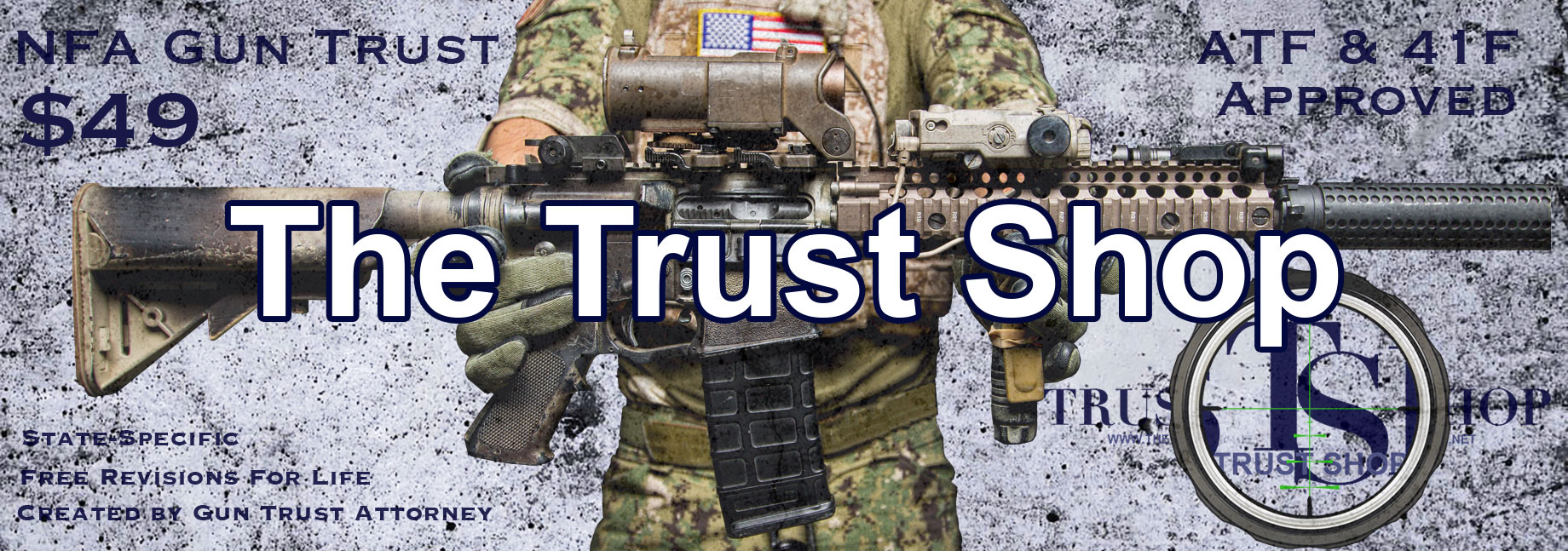Welcome to the Trust Shop!
Your NFA Gun Trust Headquarters!!
Are you ready to Create your new Gun Trust?
Creating your Gun Trust is simple when you use the Trust Shop. We have an easy to follow form that guides you through the entire process. By the time you are done entering your information, you will feel completely confident that you are getting a fully customized State-Specific Gun Trust, tailored to meet your exact situation. Every Trust Shop Gun Trust is thoroughly reviewed by the Trust Shop lawyers. If you are looking for an automatically generated, fill-in-the-blank form that never gets reviewed by anyone… you’ve come to the wrong place!
Create your Gun Trust now, and before you know it
you’ll be at the range with your new suppressor, SBR, or machine gun!
Click on one of these Trust Shop Favorites to learn more
Want to know what’s included with your new NFA Gun Trust?
Find out more about the features and benefits packaged with the $49 Gun Trust. All yours, as soon as you become a Trust Shop customer
How does the Trust Shop do all of this for only $49?
For those of you thinking this might be too good to be true, click here to find out how the Trust Shop lawyers give you the best Gun Trust on the market at such a low price.
Already a Trust Shop customer?
This is where you go to find additional Gun Trust forms and documents
Want to trade in your old trust for a Trust Shop NFA Gun Trust?
There is no need to pay for expensive revisions or create a 2nd trust, when you get the Trust Shop Restatement of Gun Trust
Lamination, Binders & other Cool Stuff
Want to protect your Gun Trust? Or, maybe you want a hard-copy to toss in your range bag? The Trust Shop gives you a bunch of different options. Click here to learn more.
The Trust Shop NFA Access Point
This is where you will find all of the Trust Shop NFA resources, including the ATF Form System and our “How-To” Articles
Silencer and SBR Applications made EASY!
Your new Gun Trust includes unlimited access to the Trust Shop ATF Form System. Now you can generate ATF Forms, without the nonsensical ATF madness. The ATF Form System includes complete and easy to follow directions for creating Forms 1, 4, 20 & 23 (Rule 41F Responsible Person Questionnaire). What used to be a frustrating and time-consuming nightmare, is now a quick and painless process.

